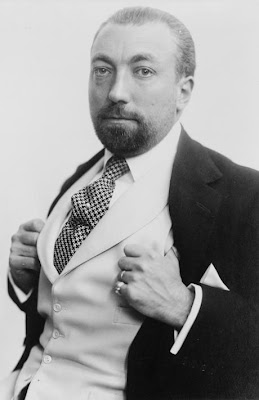We had a visit today from Jason Grant, Style Director of Real Living Magazine. He has just launched his own website and blog, check it out.
Labels:
Studio
THE VIVID HIGHLIGHTS WERE...

Sunday was the last day of the Vivid Sydney Festival. I went down to Macquarie Street on Saturday night, along with many tourists and Australians to view the historic sandstone buildings in Sydney's CBD. They are incredible architectural constructions by day, but by night lit up with imagery reflecting Australia's colourful past and present, their structures became even more symbolic and impressive. The highlights for me (no pun intended) were St Marys Cathedral and the Conservatorium of Music. Above are some of the images I took.
Labels:
Out and About,
Studio
NEW LOOK VOGUE LIVING AUSTRALIA
The magazine features a new masthead, type design and content including a new 40+ page travel section and features on entertaining. There are also photos from our Sydney Moderne launch in the social pages!
A huge congratulations to David Clark and his team for a fantastic redesign of Vogue Living July/August 2010. We love the fresh art direction and inspirational editorial and look forward to seeing the next issue!
Labels:
Out and About,
Things we Love
PERTH TESSUTI MODERNE LAUNCH
Anne Stevenson from Mokum and Renata Zangrando from Tessuti Village Agency
Anne Stevenson presenting the Moderne collection at Tessuti Village Agency in Perth
Our Moderne collection was launched in Perth at Tessuti Village Agency’s showroom in Chelsea Village. Anne Stevenson from Mokum presented to over 60 designers who visited the showroom to be introduced to the collection.
Renata Zangrando of Tessuti was thrilled with the response and pleased to see so many of her clients visiting the showroom to see the new products.
PAUL POIRET
Paul Poiret
Perfume De Rosine Advertising
De Rosine perfume bottle
French fashion designer Paul Poiret established his own fashion house in 1903. He was famous for his controversial and flamboyant clothes. He designed creative window displays and threw legendary parties to draw attention to his work, his instinct for marketing and branding was unmatched by any previous designer. In 1909, he was so famous that H.H. Asquith invited him to show his designs at 10 Downing Street. The cheapest garment at the exhibition was 30 guineas, double the annual salary of a scullery maid.
Poiret drew his inspiration mostly from other countries such as Egypt, Morocco and other parts of Africa to name a few. When it came to his famous parties he made all his guests dress in costume to represent these countries, if they did not dress up they were turned away. He even had a leopard amongst his lavish displays.
Poiret's house expanded to encompass furniture, decor, and fragrances in addition to clothing. In 1911 he established the company Parfums De Rosine, named after his eldest daughter. Poiret's name was never linked to the company, but it was effectively the first fragrance launched by a designer.
During World War 1, Poiret left his fashion house to serve the military. When Poiret returned in 1919 the house was near bankruptcy. New designers like Chanel were producing simple, sleek clothes that relied on excellent workmanship. In comparison Poiret's elaborate designs seemed dowdy and poorly manufactured. Although his designs were breathtaking, his constructions were not.
Poiret was suddenly out of fashion, in debt, and lacking support from his business partners, having spent all his money on lavish parties, and in 1929 he was left with no other choice except to close the house of Poiret. After the house had closed its leftover clothes were sold by the kilogram as rags. When Poiret died in 1944, his genius had been forgotten.
De Rosine pays homage to Paul Poiret and the extraordinary life he once lived.
Labels:
Collections,
Inpsiration Strikes,
Studio
STUDENT PRESENTATION

Last week a group of architectural students visited our studio. Bethany took them through her design process. For architectural students it was interesting to see the concept behind a textile design. It is important for them to understand fabric application in their career path, and although they may not specify fabrics in their end job, if they gain a knowledge of fabric application it will give them an edge on their peers when applying for jobs in the industry.
Labels:
Studio
WHAT ARE WARP & WEFT?
Terms like warp & weft are used on a regular basis when talking about woven textiles. We would like to explain these terms more in detail to clarify what they mean and how to use them properly.

Woven textiles in general are created on a loom through interlacing / interweaving yarns or fibers, which run at a 90 degree angle to each other.
The warp or warp yarns are the yarns that run longitudinal in the fabric, or one can also say down the roll of fabric.
The weft or weft yarns are the yarns, which run widthways in a fabric or horizonally on a roll of fabric.
Once fabric has been cut from the roll, it can be quite hard to tell which yarns are the warp and which are the weft yarns.
One way of telling which is which is that warp yarns are quite often finer / thinner than the weft yarns.
Below image shows a close-up of Rivoli colour Prussian Blue.
The dark blue yarns are the warp and the gold coloured yarns are the weft.

Subscribe to:
Posts (Atom)












